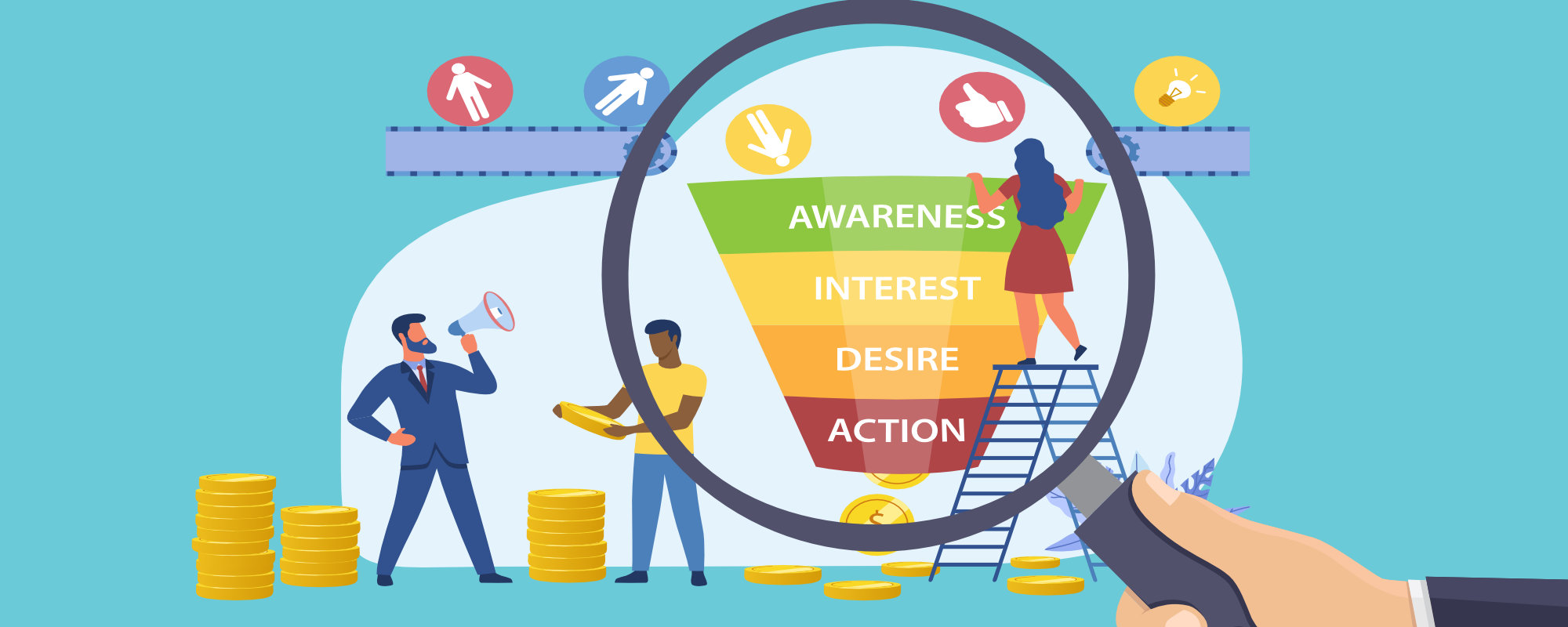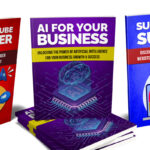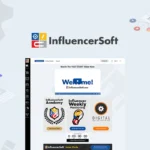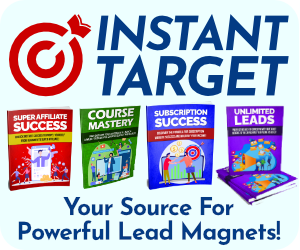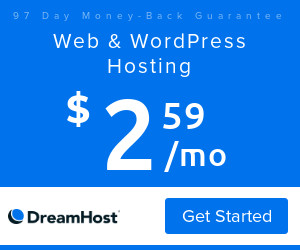Table of Contents
What Analyzing a Sales Funnel Can do?
Why is a Sales Funnel Important?
Understand the 4 Sales Funnel Stages
How to Build an Effective Sales Funnel for Your Business
Measuring the Success of a Sales Funnel
You need to know the various stages of the sales funnel in order to align your marketing efforts with the different stages of a customer’s behavior.
In a funnel, there will be certain steps in between the initial one and the final goal that you want your customer to take. Figuring out what is a sales funnel and each sales funnel stage is crucial in order to know how you can improve the process and make each level more effective. By figuring out the right tactics and steps, you’ll be able to make things work better and, as a result, improve your conversion rate.
There are a few steps to take when using tactics, each of which is important. First, you need to be clear on your goal and understand how your tactic can help you reach that goal. After that, you need to assess what is working and what isn’t to see if the tactic will work long term, and then you must adjust. Finally, don’t stop at one tactic – start a variety, test them out and keep track of the ones that work for you.
A sales funnel is a powerful way to increase your business’ sales. By managing your funnel and focusing on leads that are most likely to buy from you, you can streamline the process and make more sales. Having a well-defined funnel will help you focus on the most important parts of your business and increase your bottom line.
What is a Sales Funnel?
The sales funnel is each step that someone must take in order to become your customer. You can identify the most important steps for the sales funnel, and work on attracting customers for each of these stages.
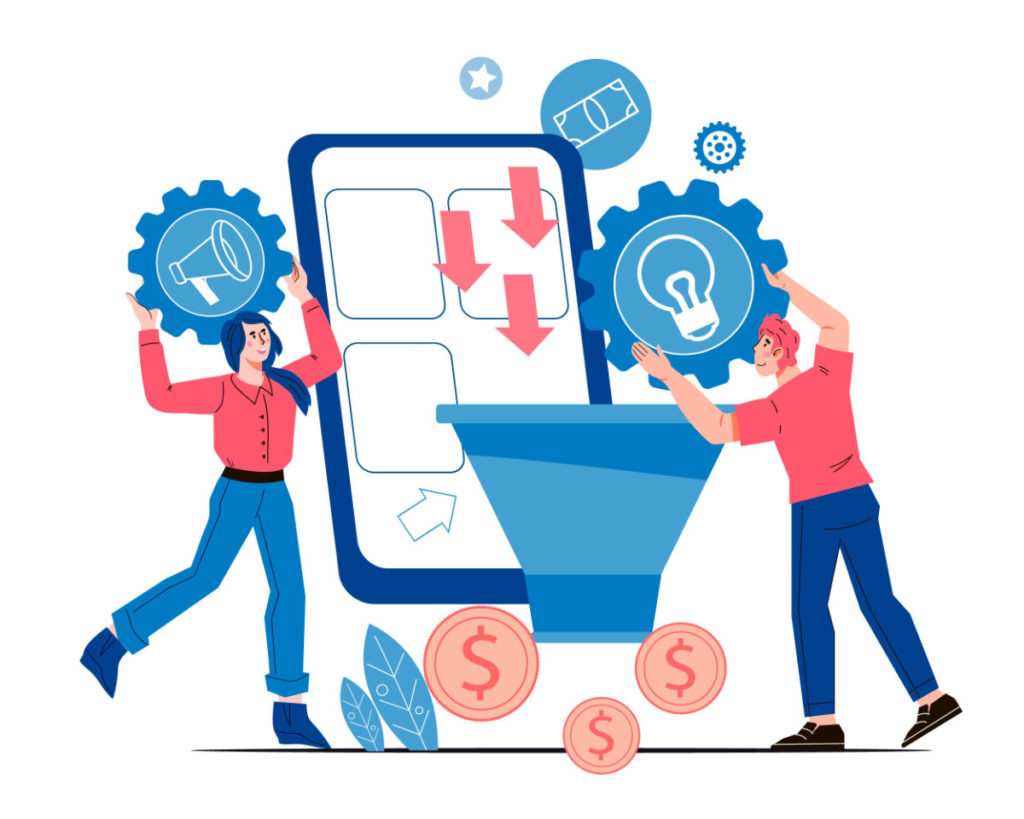
The funnel describes each step that a potential customer needs to take for you to make a sale. When first starting a business, it’s important to have a clear vision of the sales funnel from beginning to end. And then to understand what sort of customers you need at the beginning stage of your business, and what type of customer you want at the end.
A sales funnel is a metaphor commonly used in business to describe how a company moves potential customers through the sales and marketing process. It starts with a big wide mouth at the top, representing potential customers — everything from web traffic to direct mail leads. The wide part of the funnel narrows down as you move towards the bottom and represents your customers who have converted into paying customers. Thus, it illustrates that every sale begins with many people and ends with a much smaller number of customers who purchase the product.
What Analyzing a Sales Funnel Can Do?
To understand what is a sales funnel, you need to understand what a sales funnel can do for your business. A sales funnel can help you find the holes in the funnel — the places where prospects drop out and never convert. In order to make your marketing campaigns successful, you need to understand where your visitors are dropping off, and why they are dropping off. If you gather data about how visitors interact with different parts of your website, you can determine whether your messaging is making sense to people, and if not, how you need to change it.
Poor sales funnels can cause friction for your prospects and often result in them dropping out of the sales process early on and never converting. You’ll figure out where visitors drop off from your website and what you can do to bring them back.
Why is a Sales Funnel Important?
A sales funnel is a must-have for businesses of all sizes. Here are some of the reasons why:
Creating More Customers
Sales funnels are important because they create customers. A sales funnel takes a potential customer and guides them through the steps of becoming a paying customer. Without a sales funnel, businesses would have to rely on luck to find new customers. Sales funnel also helps businesses understand what is working and what isn’t, so they can make changes and improve their business.
Generating More Referrals
When it comes to growing a business, generating referrals is key. A well-oiled sales funnel can help you do just that. By providing your potential and current customers with valuable content and a great buying experience, you set the stage for them to refer their friends and family members to you. And, as any business owner knows, referrals are the best kind of leads – they’re already interested in what you have to offer!
Tracking Your Customers
A sales funnel helps you monitor and track your customers as they move through the buying process. It can help you identify potential problems and areas where you may need to adjust.
Sales funnels also help companies identify issues within the sales process, so that they can improve their conversion rate. By tracking and analyzing each step of their funnel, companies can collect feedback and adjust better their understanding of each buyer’s journey. This helps companies improve the efficiency of their teams, because they start targeting buyers earlier on in the sales process.
Focusing Efforts on Potential Customers
A sales funnel is important because it helps to focus your efforts on potential customers who are more likely to buy from you. It does this by narrowing down the number of people who see your offer, and by helping you to target your marketing efforts more effectively. The sales funnel can also help you to track the progress of potential customers as they move through the buying process, so that you can adjust your marketing strategy accordingly.
Today, success in business stems from a feature that integrates both sales and marketing within a marketing funnel and to build loyalty with consumers. By using content marketing, data analytics, and social media, companies make sure their customers have a smooth journey through the sales funnel and can build trust.
Understand the 4 Sales Funnel Stages
It’s important to understand how people make buying decisions, because you want to be able to promote your products and services in a way that connects with the buyer. Thus you need to know what is a sales funnel stage. There are 4 stages which ideally, you want your customers to go through these stages of awareness, interest, decision, and action. If you can do what’s necessary to help them go through each of these stages, they will see your company as a trusted brand, and they will buy from you rather than from a competitor.
Each of the different sales funnel stages requires a different marketing strategy. It’s not up to you as the marketer to decide on when to start marketing to your audience; it’s up to them. They will become aware of your product when they’re ready. So, if you market too early, you’ll risk sending your message to people who aren’t at this stage yet and don’t want to be marketed to yet.
Let’s examine each stage of the sales funnel more closely.
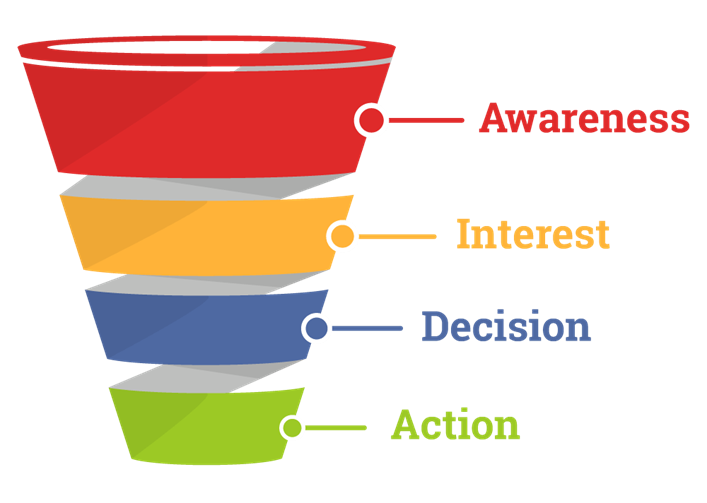
Awareness
This stage includes customer prospects who are well-informed enough to have become aware of your products’ or service’s existence via content marketing, an email campaign, social media marketing or another avenue, but have not yet contacted you for more information. There is still room for expansion here. Many content types are available and many ways to reach out there.
This is the first step in converting a consumer into a customer. The goal of advertisement is simply to spread awareness about your product or service, and for the consumer to become aware of you as a brand.
Your prospect has heard of you. Your business is starting to become a relevant thought in the customer’s mind. Your prospect becomes aware of your business and what you offer.
When right-time, right-place chemistry occurs, consumers buy immediately. It’s a perfect storm of timing, where they’re already aware of your brand, product, and value. Most of the time, however, the process is more of a courtship. You’re trying to get them to return to your site and engage more with your business.
No matter what business you are in, the awareness stage is crucial to achieving any level of success. If you hope to be successful in your online business, then you need to generate interest in your products and services. In these days of information overload, this is not an easy task. You have many competitors, so you need to stand out in order to gain customers’ attention. The great thing about social media marketing is that it can help you create a buzz about your company and products.
Interest
The prospect is interested in your product, which is good! They are not just browsing; they came to you for a reason. The prospect may reach out to the organization, either through phone, email or social media. However, you can’t expect them to buy from your website directly. In order to encourage them to sign up for your product, you need to continue providing value and answers to their questions. In order to do this effectively, it’s important that you be available for communication, and make sure that the questions that prospects have are answered as thoroughly as possible.
At this stage, they’re doing research and comparison shopping to figure out if they should buy from you or from a competitor. At this point, your main goal is to provide helpful, credible information about your product or service that answers the objections and questions that your target customer is likely to have.
This is the time when you must show off your expertise on the subject and provide great content that will blow them away. Your main goal is to give good content, so you should think about what motivates people to remain on your website. Think of your website as a service, rather than a place where you want people to engage with your products and buy something.
The content you create for this stage doesn’t need to promote anything or sell anything. It’s important to understand that engaging with prospects is not the same as selling. The best way to get prospects to buy is to be helpful and establish yourself as an expert.
If you try to market your product or service right away and push it at the consumer, you’ll chase them away. When you market yourself, you want to get the audience to come to you. Build trust, share valuable content and provide helpful information. This respects and honors the consumer’s time and intelligence, which will ultimately bring them to you.
Decision
The decision stage is when potential customers are ready to choose to buy your product or use your service. In this stage, they are usually comparing you with competitors. By doing research on your target audience and analyzing their needs and goals, you can help them determine that you are the one to choose.
Your goal is to gain trust and provide value so you can stand out from your competitor. You can do this by giving your prospects “free” things (like guides, cheat sheets, eBooks, courses) that help them make the right decision for their business needs. Keeping the customer engaged and considering you over your competitor will lead to sales.
You then make your offer irresistible. It could be as simple as giving something away for free. Maybe you’ll give your customers free shipping or throw in a bonus product as a perk when they order. If you can, make your offer so good that they can’t risk not taking advantage of it.
Action
Every stage of the sales funnel is a chance to turn your potential customer into an actual customer. Every step in this funnel is a chance to turn them from someone who just knows about your brand into someone who feels strongly enough to make a purchase.
Once the prospect has seen all the benefits to your product, they will be ready to make a purchase. What happens during this stage will have a huge impact on whether you close the sale. This is when customer service takes center stage, and it’s crucial that you have this aspect working smoothly. At this point, the customer will decide if they want to continue working with you.
When someone buys your product or service, there’s a personal attachment to your brand. In many cases, the customer has already paid you and is expecting a higher level of service than they were previously used to. You want to make sure that you let them know that you appreciate their purchase, and even thank them for spending money with you – but you also want to make sure that if they have any problems with their product or service in the future, that you are available to assist them.
One way to create loyal customers is to remind them that you appreciate their business. So, when a user buys a product, send them a thank you email or tweet, or send them a message through another social media platform, such as Messenger. Remember, if your customers are happy, they will keep buying from you.
Customers go through your sales funnel stages and choose to purchase something you are offering. Now, you may think that because they have purchased your product you can sit back and relax. But, no! You will still have work to do. You will want to turn just one customer into many more, who will create financial security in your business. The goal is to increase the number of people who act on that purchase by connecting with them, following up with them through emails and social media, and rewarding them for their loyalty in hopes that they will refer other customers.
How to Build a Sales Funnel for Business
If you run a business, then you know how crucial it is to have an effective sales funnel. In order to build an effective sales funnel, here are several best practices that you can follow:
Step 1: Analyze Your Audience’s Behavior
In order to attract customers, it is best to define a target audience. For a web-based business, this can involve analyzing metrics on how prospects use the site — including what they find most popular and their bounce rate. Conducting market research by doing surveys can also help you determine who your target audience is. This also involves analyzing your business’s web traffic and looking at what kind of customers visit your website. You can also study the metrics that show the amount of time your clients spend on your webpages, where in the funnel they drop off, and what they are searching for.
This can be done by analyzing data on traffic coming to your site. You want to find out what works, and what doesn’t. Which makes you money, and which drives away users. You want to create a funnel where interested prospects end up as clients. Otherwise, you don’t know how to use your resources in the best way.
You need to learn as much as you can about your potential customers. By constantly monitoring your audience, you’ll be able to identify what kind of content they like to engage with, which improves both your marketing and sales funnel. Being aware of their in-app behavior will help you refine your buyer personas and provide a better service for the customers that are more likely to become your loyal long-term buyers.
The more you know about your ideal customer, the better your sales funnel will be. You will need to define your buyer personas. This is a very important thing to do because people who aren’t a good fit for what you sell will not convert as well. Now that you have these buyer personas, you can start to customize your sales funnel to them. You need to take note of where they are clicking, when they are scrolling, how much time they spend on each webpage. All these data can help you refine your buyer personas and make sure that you’re always engaging your best customers.
It’s more important to study your customers and find out what makes them tick, than to study the industry you’re in, and the other people who market the same products as you. The more you know about your ideal customer, the better you will be able to sell a product or service to them.
Step 2: Capture Your Audience’s Attention
Creating content is the most crucial part of a successful sales funnel. Now, not all content you create will flood you with cash. Some pieces of content will be more useful to that industry or niche that your product is in. The real goal is to post as much content as you can in order to build a following, and eventually drive sales. The best way to do this is by opening a big door in front of your sales funnel and letting the traffic flow in. Your business won’t work if it doesn’t bring in any revenue, so don’t think too hard before pumping out a video, infographic, etc. and posting to your blog.
You need to expose your product or service to as many people as possible. Use your networks, email lists, and all your content to build brand awareness on a global scale. Great copywriting allows you to lure people into your sales funnel and convert them into buyers and evangelists. Will it work 100% of the time? No, but if you put in the work, it will work eventually.
Your content delivers your message. The way that you reach out to people involves both social media and other types of content, such as blog posts and video marketing. The more content you produce, the better! Make sure you’re leaving your audience wanting more by always coming up with new and exciting ideas to share with them.
If you’re willing to spend some cash, you can run an ad on one of the major social media sites. There are several different social networks that can help you reach your target audience or customers. The ideal place to run your ads depends on several factors, including where your target audiences hang out and what they’re likely to be interested in. So figure out where your target customer is most likely to come from: Instagram, Facebook, LinkedIn, Twitter, etc.
Step 3: Build a Landing Page
Once you have their attention, you want to direct them somewhere. One of the best ways to do this is by creating a landing page that focuses on the user experience and includes a clear call to action. Get them to follow an offer, link or sign up for a newsletter. You’ll want to include specific details about your offer and make it easy for them to sign up. They can still sign up for email updates even if they don’t buy anything.
Lead generation is an important part of your landing page strategy. If you try and sell to people too early in their decision journey, they’ll be turned off by your sales pitch. Your landing pages should be focused on capturing leads instead of pushing the sale, since these people are still low in the sales funnel. Focus on building trust and providing value by providing high quality content that builds familiarity with your brand and assists your visitors in making buying decisions. You can build familiarity and trust through high quality content.
As soon as they land on your website, you want to show them straight away how to get the most out of it. Providing a clear path is vital in order to increase your chances of getting customers. You might want to reduce the options available and keep the focus on your main product or service. A welcomed sign-up would be a great addition to your landing page since new visitors would love to get in touch with you.
This would be a good place to use your call-to-action button. Use a call-to-action that has a very clear message as to why they should click on it and what will happen once you do so. Whether you want them to download a free e-book, sign up for your newsletter or purchase a product, a bold call to action tells your customer exactly what you want them to do because if you don’t then they will remain lost and never know what to do. If you want your visitors to do something for you, specifically, you should give them a clear and bold call to action.
Step 4: Create an Email Drip Campaign To Generate Leads
Lead Generation is important in order to provide consistent leads to your sales team. Lead generation tools such as InfluencerSoft can be a great way to help streamline this process, and to make lead generation easier by allowing your sales team to focus on closing the deals they generate.
Lead generation is the process of generating leads and turning them into customers. Once you’ve identified the problems and needs of your target audience, your job becomes figuring out how to get their contact information, what information you have to share with them, as well as how to get their attention. There are several tools you can use to generate more leads for your business, including InfluencerSoft.
Market to your leads through email. This can be useful in order to provide them with valuable content. If they like what you provide and they find it useful, they are more likely to be interested in your products and services. It is also important to only send out one or two emails a week since if you spam your leads they might get annoyed or even mark you as spam. The goal of email marketing is to not just sell your product but also to educate your market. There are many benefits to direct email marketing, and it’s crucial in order to maintain user engagement with you.
Build up to the sale through email by developing relationships with your leads. You can’t sell to someone you don’t know! Learn about their niche interests so that you can talk to them about what they care about, rather than what you want to sell them. Email is a great way to nurture the relationship between you and your potential clients before making a sell.
When your lead reaches the final point of your drip campaign, they should have a great understanding of what you’ve been working on with them and ready to buy. Make sure you have a relevant offering that is in line with what you’ve been discussing. This could be another free piece of content, or even just a great deal on your latest offer. Offer them something that is so incredible and time sensitive that they abandon any other activity and take immediate action. Your goal is to have them make an immediate purchase or contact you so that they can take advantage of the amazing offer.
Step 5: Keep in Touch With Your Customers
When leads are nurtured and converted into customers, the goal of the sales funnel is to develop and maintain customers. Do not neglect your existing customers. Instead, connect with them, continue to be pleasant to them, offer them more coupon codes, and try to engage with them on social media. Convey your appreciation and send out further coupon codes. Then, involve them on social media to generate further leads.
You don’t want to just attract new customers for your business. You want to keep customers coming back for more, buying from you again and again. This is where keeping in touch comes in. Creating lead nurturing campaigns with automated emails and increased contact is a good way to keep your customers happy because it makes them feel warm.
Your existing customers are warm leads. They know you and trust you, which makes them great prospects for repeat business. It’s best to come up with ways to reward them for being existing customers (like discounts on their next purchase). Don’t forget about your existing customers, as they make up one of the most important bases for your business.
It is always a lot easier to convince someone to buy from you if they already know you. If they already know that you can find solutions for them and help them, then this will make it much easier to get a new sale. After all, you’ve already sold them something! Since they already know you, they can be easily turned into repeat customers and even advocates of your product or service – if you give them reasons to do so.
Learn more about basic components of a solid sales funnel that sells.
Measuring the Success of a Sales Funnel
Your funnel isn’t static. As your company grows and matures, so should your sales funnel. Consider the options you have for each stage of your funnel and ensure that you have different ways to engage with your leads at each stage. That way, they receive the right message at the right time.
Your sales funnel might not be working as well as it did when you first put it in place. That is completely normal. If you are constantly changing your business, your sales funnel will have to change too. Your product or service might have changed significantly since the time you put your sales funnel up, and so you might need to make little tweaks to get it working again. Even if it still works well, changes to your business could mean that adjustments need to be made.
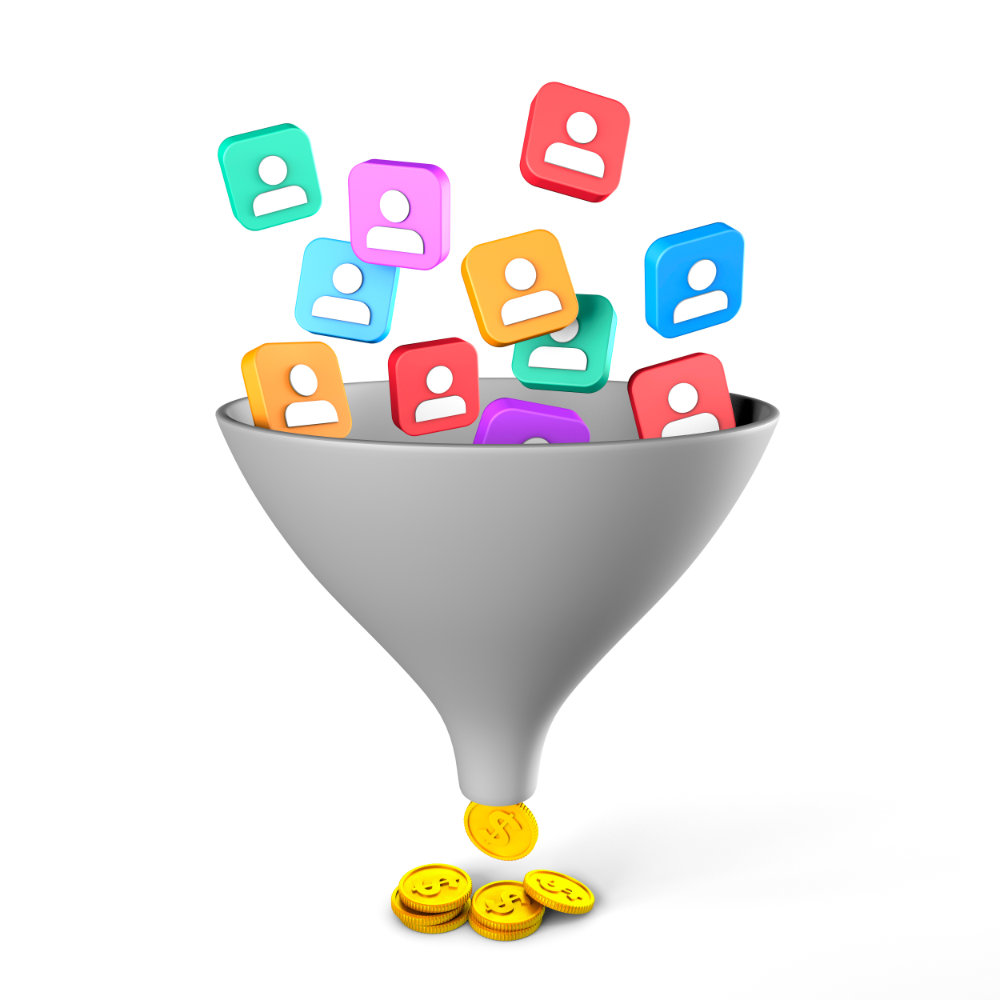
Pay specific attention to each stage of the sales funnel. Different points need to be addressed based on where the customer is at in the sales cycle. Think about what you need as a content marketer at each stage of the sales funnel and ask the questions:
- Is your marketing strategy capturing the attention of enough interested parties?
- Do your prospects seem to trust you enough to willingly give you their contact information?
- Have you received any email drip campaign payments or other payments from these marketing campaigns?
- Do existing customers regularly return to buy items again?
Identifying your customers’ needs is one of the important tasks when developing your product or service. When you know how and why people buy from you, you’ll be able to create a sales funnel that brings them in and entices them to buy.
Conclusion
What is a sales funnel? Well, creating and optimizing a sales funnel is hard work, and it can take quite some time. But this process is key to your success as an entrepreneur. If you create and optimize your sales funnel, you can successfully reach your audience, convince them to buy from you, and make the sale.
Take time to build a sales funnel that represents what you want and what your audience wants. A sales funnel is a process that helps businesses convert leads into customers. By understanding the steps in the funnel and using them in your marketing, you can increase your sales and grow your business.


